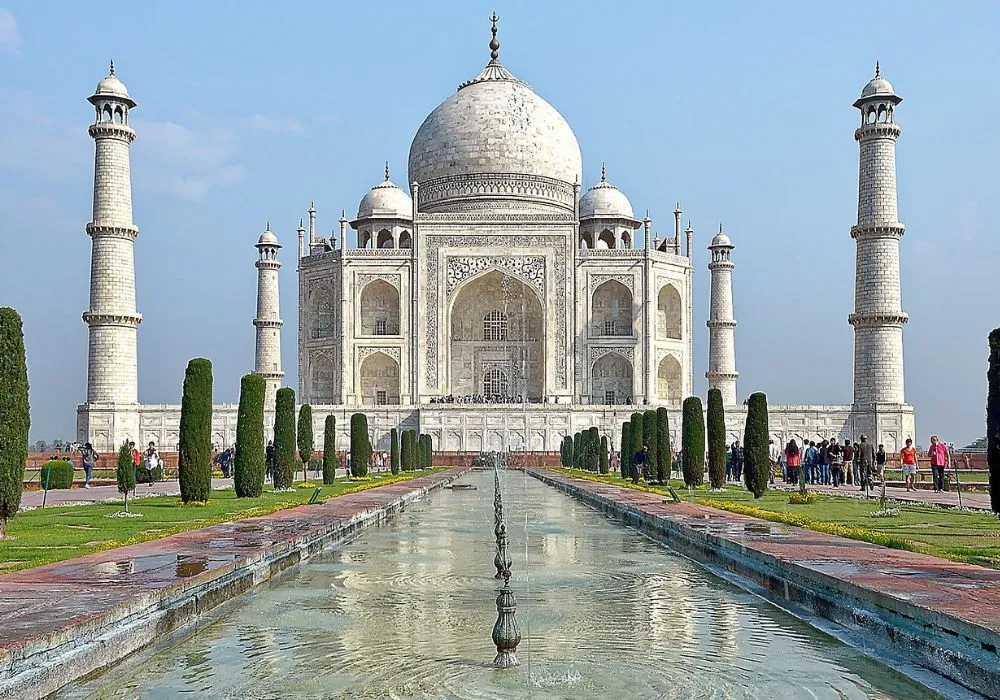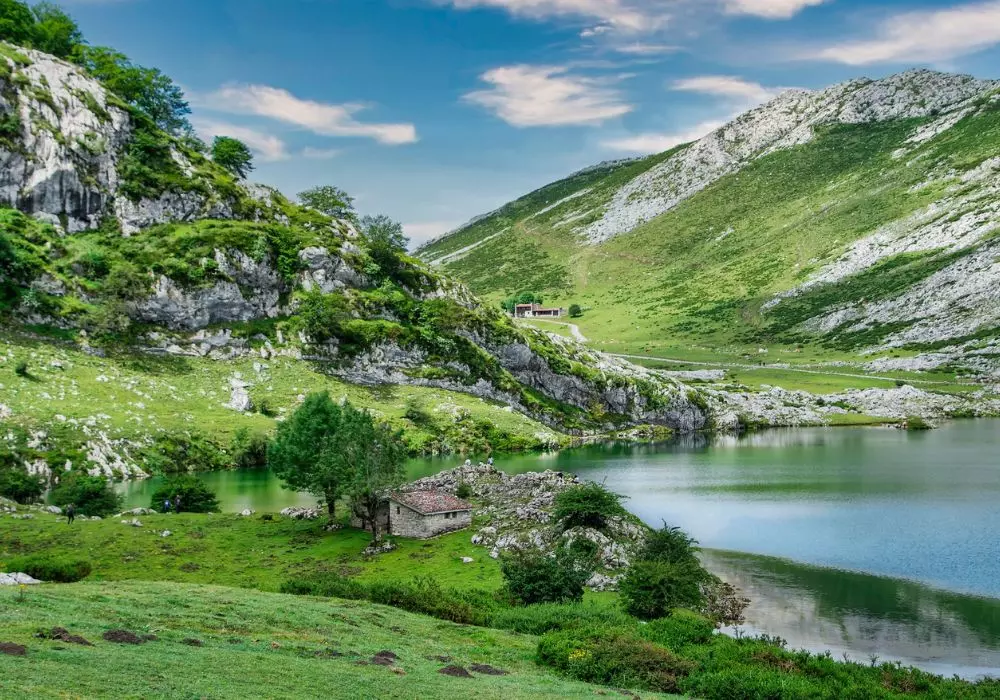A journey to the Taj Mahal in Agra, India is a voyage into the heart of romance and architectural splendor.
This iconic monument stands as a pinnacle of human craftsmanship, capturing the imagination of visitors with its ethereal beauty and rich history.
Commissioned by Mughal Emperor Shah Jahan in the 17th century, the Taj Mahal is a symbol of enduring love, built in memory of his beloved wife Mumtaz Mahal.
Its pristine white marble façade, adorned with intricate carvings and surrounded by lush gardens, creates a mesmerizing ambiance that continues to captivate travelers from around the world.
Earning its place among the Seven Wonders of the World, the Taj Mahal holds a position of unparalleled significance and reverence in the global cultural landscape.
Its inclusion in this esteemed list recognizes not only its architectural brilliance but also its universal appeal as a symbol of love and devotion.
The Taj Mahal’s designation as a wonder of the world serves as a testament to its enduring legacy, drawing millions of visitors each year to marvel at its magnificence and pay homage to the timeless bond between Shah Jahan and Mumtaz Mahal.
Taj Mahal: Key Details and visit Information
| Feature | Description |
| Location | Agra, Uttar Pradesh, India |
| Built By | Mughal Emperor Shah Jahan |
| Year of Completion | 1653 |
| Architectural Style | Mughal architecture with Persian, Islamic, and Indian influences |
| Materials Used | White marble inlaid with precious and semi-precious stones |
| Key Features | Central dome, four minarets, intricate pietra dura inlay work, symmetrical gardens, and reflecting pool |
| Purpose | Mausoleum built in memory of Shah Jahan’s beloved wife, Mumtaz Mahal |
| UNESCO Status | UNESCO World Heritage Site since 1983 |
| Visitor Experience | Famous for its stunning sunrise and sunset views, guided tours, and historical significance |
| Nearby Attractions | Agra Fort, Mehtab Bagh, Fatehpur Sikri, and Itimad-ud-Daulah’s Tomb |
| Accessibility | Easily accessible by road, rail, and air; the nearest airport is Pandit Deen Dayal Upadhyay Airport in Agra |
| Best Time to Visit | October to March for cooler temperatures and clear skies |
History of the Taj Mahal
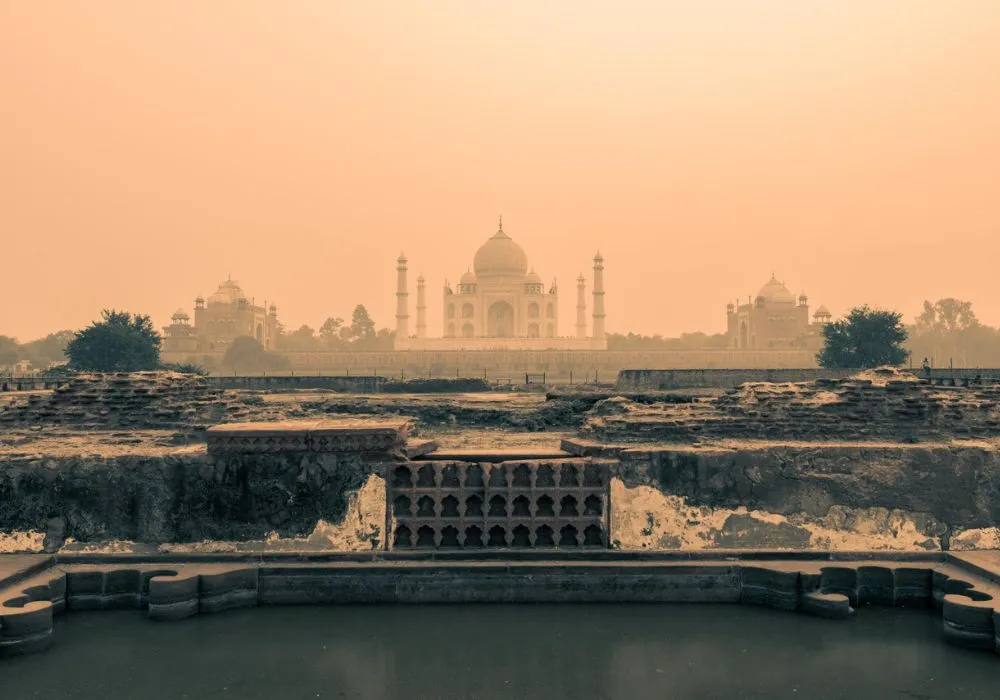

The story of the Taj Mahal begins with the visionary Mughal Emperor Shah Jahan, who commissioned its construction in the 17th century.
Struck by grief at the death of his beloved wife Mumtaz Mahal during childbirth, Shah Jahan resolved to create a monument befitting her memory, one that would stand as a testament to their eternal love.
In 1631, Shah Jahan embarked on the ambitious project of building the Taj Mahal in Agra, India.
He spared no expense in realizing his vision, employing the finest architects, craftsmen, and artisans of the time to bring his dream to life.
Over the course of twenty-two years, thousands of skilled workers toiled tirelessly to construct this architectural marvel, which would become one of the most iconic symbols of love and devotion in the world.
The Taj Mahal’s architectural design draws inspiration from a blend of Persian, Islamic, and Mughal styles, resulting in a masterpiece of symmetry and balance.
Influenced by the architectural achievements of his predecessors, Shah Jahan sought to create a monument that would surpass all others in its beauty and grandeur.
The use of white marble, intricate carvings, and geometric patterns reflects the rich cultural heritage of the Mughal Empire, while the incorporation of Persian elements adds a touch of elegance and sophistication to the overall design.
As a testament to Shah Jahan’s enduring love for Mumtaz Mahal, the Taj Mahal stands as a timeless tribute to their bond, immortalized in stone for generations to come.
Architectural Marvels
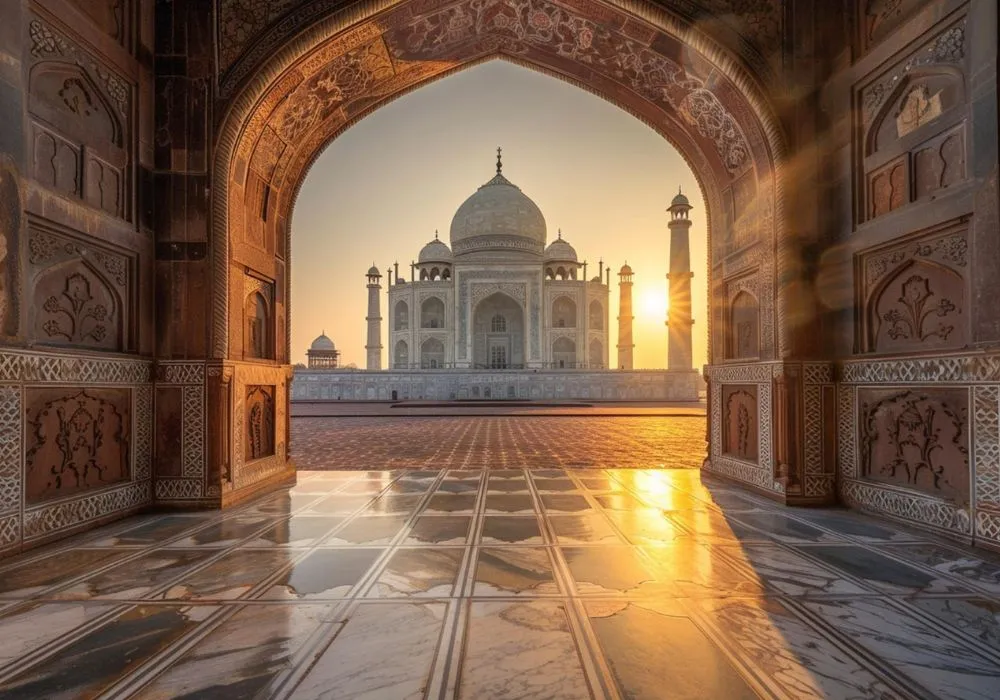

The Taj Mahal’s architectural marvels, from its iconic white marble structure to intricate carvings and symmetrical gardens, stand as a testament to human ingenuity and love’s enduring legacy.
Iconic White Marble Structure
At the heart of the Taj Mahal’s architectural splendor lies its iconic white marble structure, which stands as a symbol of purity and eternal beauty.
Quarried from the distant lands of Rajasthan, this pristine marble was meticulously transported to Agra, where skilled artisans sculpted it into the ethereal masterpiece that we see today.
The shimmering facade of the Taj Mahal radiates in the sunlight, casting a mesmerizing glow that captures the imagination of all who behold it.
Intricate Carvings and Inlays
The Taj Mahal is renowned for its exquisite carvings and inlays, which adorn every inch of its surface with intricate patterns and designs.
From delicate floral motifs to elaborate calligraphy, the craftsmanship displayed in these embellishments is a testament to the skill and dedication of the artisans who brought Shah Jahan’s vision to life.
Each detail tells a story, weaving together elements of Persian, Islamic, and Indian artistry to create a tapestry of beauty that transcends time.
Symmetrical Layout and Gardens
One of the most striking features of the Taj Mahal is its symmetrical layout, which reflects the principles of Mughal garden design.
Flanked by lush gardens and reflecting pools, the mausoleum is perfectly balanced in every aspect, creating a sense of harmony and tranquility that enhances its ethereal beauty.
The meticulously landscaped gardens, with their verdant lawns, fragrant flowers, and serene water features, provide a picturesque backdrop for the Taj Mahal, inviting visitors to stroll and reflect in its timeless ambiance.
Symbol of Eternal Love: Shah Jahan’s Tribute to His Wife, Mumtaz Mahal
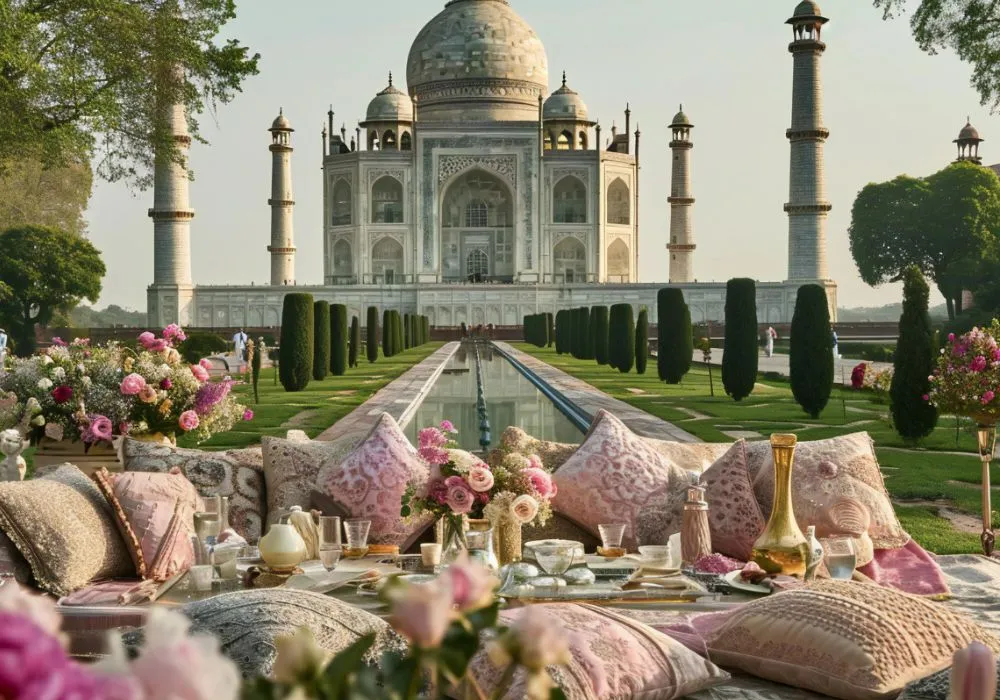

The Taj Mahal stands as a timeless symbol of eternal love, a testament to the deep affection and devotion that Mughal Emperor Shah Jahan held for his beloved wife, Mumtaz Mahal.
Commissioned as a mausoleum to honor her memory, its breathtaking beauty and exquisite craftsmanship reflect the depth of Shah Jahan’s grief and the enduring bond they shared, immortalizing their love for generations to come.
Beyond its romantic symbolism, the Taj Mahal holds profound cultural and religious significance in Mughal history.
As a masterpiece of Islamic architecture, it embodies the principles of symmetry, harmony, and spiritual devotion, reflecting the cultural ethos of the Mughal empire.
Moreover, its role as a mausoleum underscores the importance of death and the afterlife in Islamic tradition, serving as a sacred site for pilgrimage and prayer, and highlighting the spiritual legacy of the Mughal dynasty.
Guided Tours and Visitor Information
Guided tours at the Taj Mahal offer visitors a comprehensive understanding of its rich history, intricate architecture, and cultural significance.
Knowledgeable guides lead groups through the monument, providing detailed explanations of its construction, symbolism, and the story behind its creation by Mughal Emperor Shah Jahan in memory of his beloved wife, Mumtaz Mahal.
These tours also include practical information such as ticketing details, entry timings, and amenities available on-site, ensuring a seamless and informative visit for all.
Views from Different Vantage Points
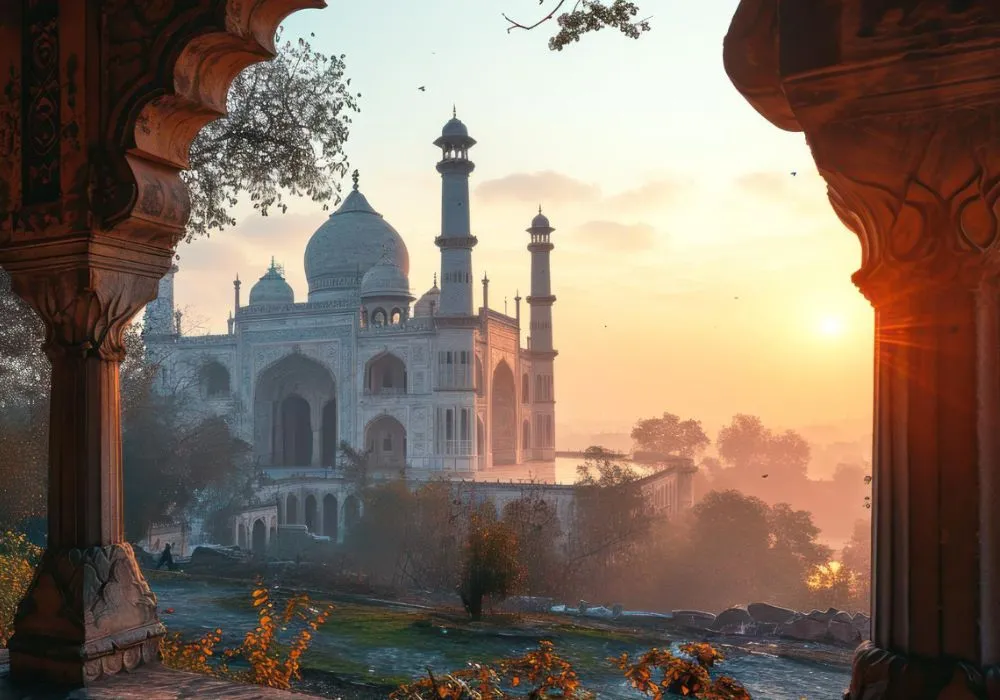

The Taj Mahal’s breathtaking beauty can be appreciated from various vantage points within its complex, each offering a unique perspective of this architectural marvel.
Visitors can enjoy stunning views of the monument from the banks of the Yamuna River, where its pristine white marble facade reflects in the water, creating a picturesque scene.
Additionally, the marble platform surrounding the mausoleum provides panoramic vistas of the Taj Mahal against the backdrop of Agra’s skyline, allowing visitors to capture its timeless allure from different angles and lighting conditions.
Nearby Attractions such as Agra Fort
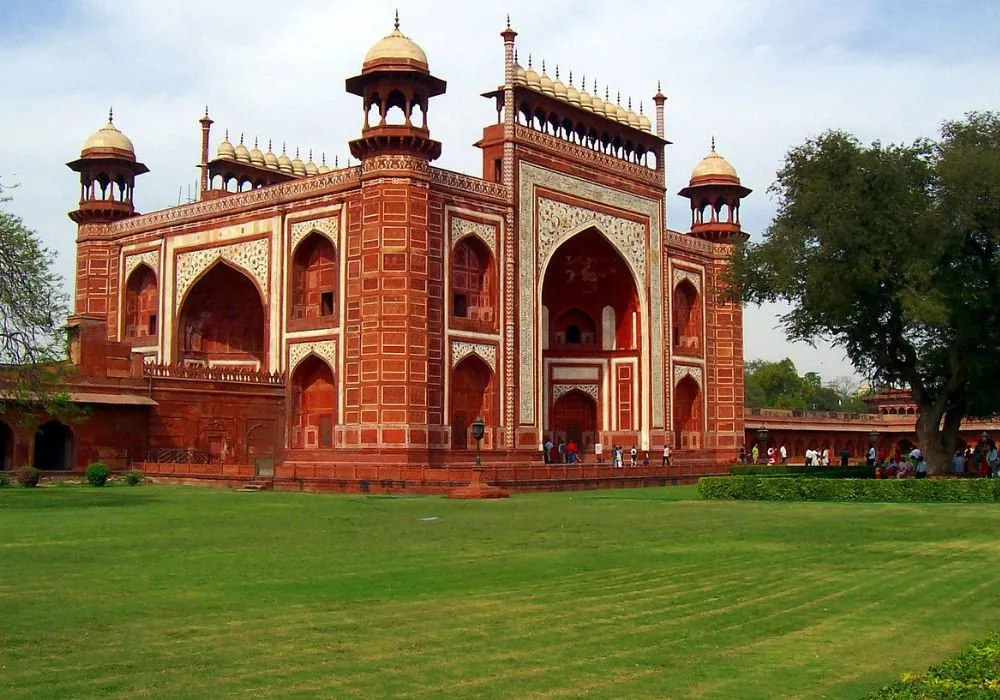

While visiting the Taj Mahal, travelers have the opportunity to explore other nearby attractions, such as the majestic Agra Fort.
This UNESCO World Heritage Site, located just a short distance away, offers a glimpse into India’s rich history and architectural legacy.
Visitors can wander through the fort’s labyrinthine halls, marvel at its intricate palaces, and admire panoramic views of the Taj Mahal from strategic vantage points within the complex.
Exploring Agra Fort provides a deeper understanding of the city’s cultural heritage and serves as a complement to the awe-inspiring experience of visiting the Taj Mahal.
The best time to visit
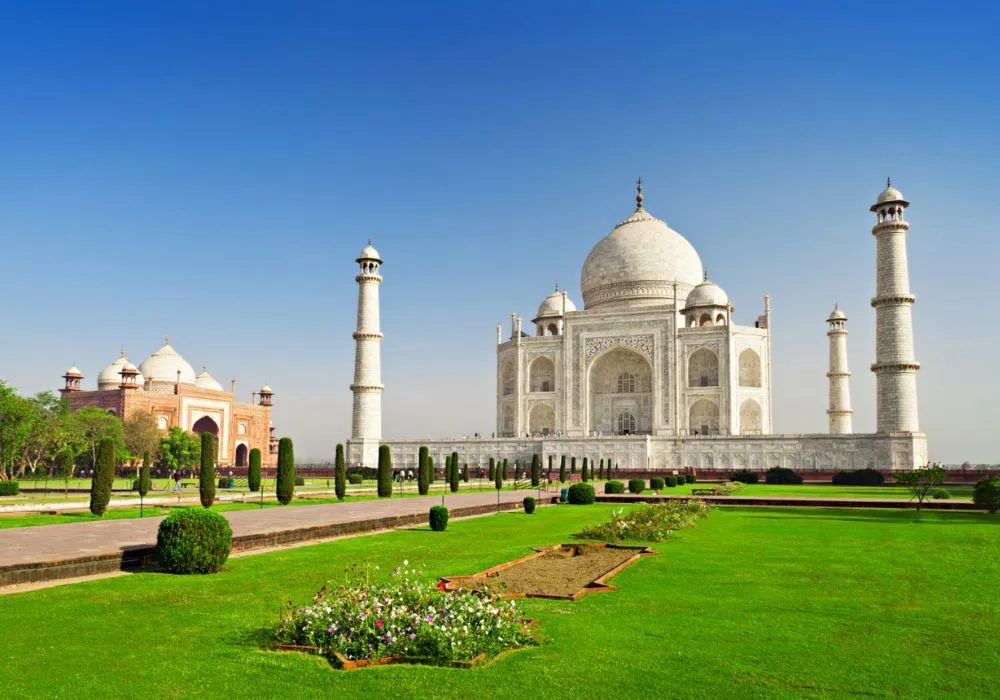

The best time to visit the Taj Mahal is during the winter months, from October to March.
During this time, the weather in Agra is pleasant, with cooler temperatures and minimal rainfall, making it ideal for exploring outdoor attractions like the Taj Mahal and nearby sites.
The months of October and November offer comfortable temperatures and clear skies, providing excellent visibility for admiring the Taj Mahal’s beauty.
December to February experiences the coldest weather, but it’s still pleasant for sightseeing, especially during the daytime.
Additionally, the early morning and late afternoon hours offer softer light for photography, enhancing the monument’s allure.
Avoid visiting during the summer months (April to June) as Agra experiences extreme heat and humidity, making outdoor activities uncomfortable.
The Taj Mahal’s white marble can also become uncomfortably hot during the day, which may detract from the experience.
Similarly, the monsoon season (July to September) brings heavy rainfall and humidity, making outdoor sightseeing challenging.
The Taj Mahal’s grounds may become muddy, and visibility can be reduced due to fog and rain.
Overall, planning a visit to the Taj Mahal during the winter months ensures pleasant weather, clear skies, and optimal conditions for experiencing the monument’s beauty and historical significance.
Accommodation options available in Agra


When visiting the Taj Mahal, there are various accommodation options available in Agra to suit different preferences and budgets. Here are some popular stay options:
- Luxury Hotels: Agra boasts several luxury hotels offering world-class amenities, impeccable service, and stunning views of the Taj Mahal. These hotels often feature lavish accommodations, fine dining restaurants, spa facilities, and swimming pools. Examples include The Oberoi Amarvilas, ITC Mughal, and Trident Agra.
- Boutique Hotels: For a more intimate and personalized experience, boutique hotels in Agra offer unique charm, character, and hospitality. These properties typically feature stylish decor, comfortable rooms, and personalized services. Examples include The Coral Court Homestay, The Grand Imperial, and Siris 18.
- Heritage Hotels: Agra is home to several heritage properties that offer a glimpse into the city’s rich history and culture. These hotels are often housed in restored palaces, mansions, or havelis, combining traditional architecture with modern comforts. Examples include The Taj Vilas, Crystal Sarovar Premiere, and Courtyard by Marriott Agra.
- Budget Accommodations: Travelers on a budget can find a range of budget accommodations in Agra, including guesthouses, hostels, and budget hotels. These options provide affordable and basic amenities for travelers looking to explore the city without breaking the bank. Examples include Hotel Sidhartha, Hotel Love Kush, and Zostel Agra.
- Homestays: For a more authentic and immersive experience, consider staying in a homestay with local families in Agra. This allows travelers to experience Indian hospitality firsthand, enjoy home-cooked meals, and learn about the local culture and traditions. Examples include Saniya Palace Homestay, Ray of Maya Retreat and Resorts, and Taj Home Stay.
Whether you’re seeking luxury, heritage, budget, or a more authentic experience, Agra offers a range of stay options to cater to every traveler’s needs and preferences.
It’s advisable to book accommodation in advance, especially during the peak tourist season, to ensure availability and secure the best rates.
Conclusion
In conclusion, the Taj Mahal stands not only as a monument to eternal love but also as a testament to human creativity, craftsmanship, and resilience.
Its ethereal beauty, manifested in its pristine white marble structure, intricate carvings, and meticulously landscaped gardens, captivates the hearts and minds of visitors from around the world.
Beyond its aesthetic appeal, the Taj Mahal holds profound cultural and historical significance, representing the zenith of Mughal architectural achievement and serving as a symbol of India’s rich cultural heritage.
As one of the most iconic landmarks on the planet, the Taj Mahal transcends borders and cultures, drawing millions of visitors each year to witness its grandeur and experience its timeless allure.
Whether admiring its silhouette against the backdrop of a fiery sunset or marveling at its shimmering reflection in the tranquil waters of the Yamuna River, visitors are enveloped in a sense of wonder and reverence that lingers long after they depart.
In essence, a visit to the Taj Mahal is not merely a journey through time and space but also a profound experience that touches the soul and leaves an indelible mark on the spirit.
It invites us to pause, reflect, and appreciate the beauty that exists in the world, reminding us of the power of love, creativity, and human ingenuity to transcend the bounds of time and mortality.
